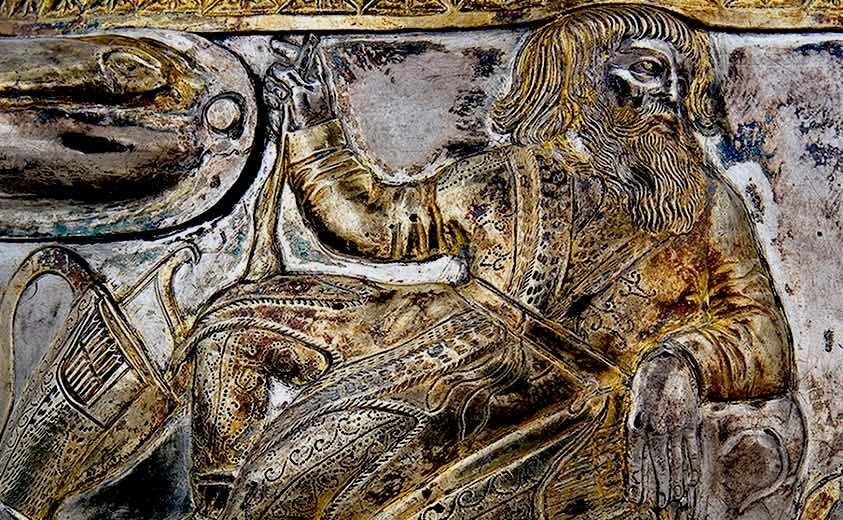Anthropologists studying a collection of ancient Scythian artifacts retrieved during excavations at sites in Ukraine have made a gruesome discovery, according to newly published research.
The multi-institutional team reports that two samples of the ancient Scythian artifacts in question, consisting of small bits of leather, were determined to be made from human skin. The findings, reported in PLOS ONE, confirm ancient accounts of the practices of Scythian warriors, namely those of the Greek historian Herodotus.
Largely a nomadic group who resided in the region now recognized as the Pontic-Caspian steppe between around 700 BCE and 300 BCE, the Scythians remain somewhat mysterious, despite the accounts left to history by Herodotus of their ferociousness in battle.
In The Persian Wars (book IV), the famed “Father of History” presents us with a grizzly account of the behavior of Scythian warriors regarding their fallen enemies.
“Many make themselves cloaks, like the sheepskins of our peasants,” Herodotus wrote, describing how Scythian warriors “make of the skin, which is stripped off with the nails hanging to it, a covering for their quivers.”
“Some even flay the entire body of their enemy, and, stretching it upon a frame, carry it about with them wherever they ride,” Herodotus explains. “Such are the Scythian customs with respect to scalps and skins.”
In their analysis, researchers Luise Ørsted Brandt, Meaghan Mackie, Marina Daragan, Matthew J. Collins, and Margarita Gleba sought evidence for the claims Herodotus made about the Scythians.


By employing techniques involving the study of ancient proteins, a discipline known as paleoproteomics, the researchers analyzed 45 leather samples from 14 Scythian dig sites in modern Ukraine. Analysis revealed their sources to have mostly been livestock including cattle, goats, and horses.
However, two samples were revealed to be made from human skin, lending apparent confirmation to the Greek historian’s narratives about these ancient warriors and their practices.
“The surprise discovery is the presence of two human skin samples, which for the first time provide direct evidence of the ancient Greek historian Herodotus’ claim that Scythians used the skin of their dead enemies to manufacture leather trophy items,” the researchers write.
The samples of human skin had likely been used as portions of quivers, the rest of which had been made from animal sources of leather.
“We argue that leather manufacture is not incompatible with a nomadic lifestyle and that Scythians possessed sophisticated leather production technologies that ensured stable supply of this essential material,” the team writes in their recent paper.
The team’s study, “Human and animal skin identified by palaeoproteomics in Scythian leather objects from Ukraine,” was published in PLOS ONE on December 13, 2023.
Micah Hanks is the Editor-in-Chief and Co-Founder of The Debrief. He can be reached by email at micah@thedebrief.org. Follow his work at micahhanks.com and on X: @MicahHanks.

